How to Clean a Dishwasher in a Few Easy Steps

The only guide you'll need to make sure your dishwasher shines!
Do you know how to clean a dishwasher?
If your dishes are coming out of the dishwasher dirty, that’s a telltale sign that your appliance needs cleaning!
You might be surprised to learn that regular dishwasher cleaning is often overlooked.
Luckily, getting the gunk out of your dishwasher is a simple job and our guide gives you tips and steps on how to restore its cleaning power.
P.S. You might want to try this on a day you’re also cleaning your oven—both appliances use much of the same dependable ingredients: vinegar and baking soda.
Why It's Important to Clean a Dishwasher
Before we dive into the steps, it's crucial to understand why cleaning your dishwasher is essential:
Efficiency: A clean dishwasher performs better, ensuring your dishes come out sparkling clean.
Hygiene: Removing food particles and mold prevents odors and ensures a more hygienic kitchen environment.
Lifespan: Regular maintenance can extend the lifespan of your dishwasher, saving you money in the long run.
How to Deep Clean a Dishwasher
A monthly deep clean entails a few quick steps. But as a precaution, always refer to your owner’s manual for specific instructions on how to troubleshoot or clean your dishwasher.
And remember to always wear protective rubber gloves to protect your hands while cleaning your machine.
Tools and Materials Needed:
- Rubber gloves
- Liquid dish detergent
- Soft scrub brush
- Non-abrasive sponges
- 2-3 old, soft toothbrushes
- ½ gallon white distilled vinegar
- Toothpicks
- Dishwasher owner’s manual
- Microfiber cloth
- 1 cup and 2 tablespoons baking soda
- Dishwasher-safe bowl
- Tea kettle
- Old, clean rag
- Sealable plastic bag
- 1 cup lemon juice (optional)
1. Remove and Clean the Racks and Baskets
Take out all the removable racks and baskets, put them in the sink, and wash them with liquid dish detergent, a scrub brush, or a sponge. Let them air dry while you tackle the interior of your dishwasher.
2. Clean the Dishwasher Spray Arm
The holes in the dishwasher’s spray arm, which is the rotating part that sits on the bottom of your dishwasher, may be clogged and cause a smell.
Remove the arms and clean them in your sink with hot, soapy water and an old, soft toothbrush, looking closely to see if there are food particles that need to be dislodged from the holes.
If the arms look grimy, use a toothbrush and straight vinegar to scrub the holes. If the holes are blocked, you may need to clear them with the help of toothpicks or wire (you can straighten a piece of a wire hanger).
Rinse the arm with water, making sure the water easily comes out of all the holes.
3. Wash the Dishwasher Filter
Different dishwasher models have varying filters, so it’s best to consult your owner’s manual to determine where yours is and how to clean it.
In general, remove the filter basket at the bottom of your dishwasher and place it in your sink to hand wash. Wipe down the filter base with a damp microfiber cloth. Wash the filter basket with hot and soapy water. Get into all the nooks and crannies using a soft scrub brush or an old, soft toothbrush.
Inspect the area where the filter basket lives to see if any food remnants need to be removed.
4. Clean the Drain Area
It’s important to clean the dishwasher’s drain, which is typically located underneath the bottom rack of the dishwasher.
In a large microwave-safe bowl, heat a cup of white vinegar to warm (about 20 seconds). Mix in two tablespoons of baking soda and pour this mixture into the dishwasher’s bottom drain. Wait 15 minutes so the mixture can work in the drain. While waiting, boil water in a tea kettle (with a spout). Carefully and slowly pour the water down the drain to dislodge build-up after those 15 minutes are up.
5. Wipe Down the Interior Walls
Use a microfiber cloth or non-abrasive sponge dipped in a mix of water and a few drops of liquid dishwashing soap to wipe down the dishwasher’s interior walls. (You don’t always need to do this step if you are going to do Step 8, which will help to clean the walls.)
6. Wipe the Door and Gasket
Get rid of any oily marks and spills that might have ended up on the inside and front of the door, the area below the door, the edges of the door, the handle, and the controls. You can do this by using a damp microfiber cloth or a sponge.
Treat the dishwasher’s door gasket (the rubber seal around the rim of the dishwasher) gently with a wipe down of ½ cup of white vinegar mixed with 3 cups of hot water using an old, clean rag.
Use an old, soft toothbrush to remove gunk or mold. Place the rag and/or toothbrush in a sealable plastic bag to contain any mold spores and dispose in an outdoor garbage can when finished.
Pro Cleaning Tip: Electronic Touch Pads
Treat your dishwasher’s electronic touchpad as though it were a regular device. Gently wipe a slightly damp and soft microfiber cloth over it to remove any sticky residue or dirt, then dry it with a towel. Do not soak it in any cleaning solutions, which could risk damage to the screen.
7. Replace Interior Parts
Put the clean filter basket, spray arm, racks, and baskets back in place inside the dishwasher. If any items (such as the filter) have locking mechanisms, make sure to lock everything in before using the dishwasher.
Photo via Rachel Belkin | Cha Ching Queen
Frequently asked questions
1. How Often Should You Clean Your Dishwasher?
Dishwasher upkeep is a daily, weekly, and monthly undertaking, but it only takes seconds to handle the tasks. Experts suggest not letting your dishwasher go without a deep cleaning for longer than six months.
Even if you don’t use the appliance that much, there could still be standing water, mold, and trapped particles lurking inside that could cause havoc, or at least leave behind nasty odors.
Here are some tips for dishwasher maintenance:
Daily: Every time you open your dishwasher, you should check for any obvious bits of food at the bottom of the appliance or lurking in the baskets (especially the utensil baskets) that need to be dislodged.
Weekly: Try to wipe down the interior door and gasket every week or so with a microfiber cloth dipped in a solution of water, white distilled vinegar, and a couple of drops of liquid dish soap.
Monthly: Go for a deep clean so you can flush out the system. If you prefer, deep clean every three months, and your dishwasher should be fine. (See steps above.)
Make use of the self-cleaning sanitizing cycle on a monthly basis if your dishwasher has that setting. Maytag recommends using a sanitizing cycle with a normal load and with dishwashing detergent.
Use it monthly or for tough loads, but not every day. A typical sanitizing cycle is longer and brings the water to about 150 degrees Fahrenheit, but for best results, consult the owner’s manual for your dishwasher.
If you don’t have a sanitizing cycle, use dishwasher cleaner monthly and follow the directions.
2. How to Clean a Smelly Dishwasher
Clean the odors from your dishwasher naturally with this process.
This step should come at the end of a deep clean or can be used monthly to ensure no trapped grease is growing inside and causing a smell.
This is also how to clean a moldy dishwasher, just in case you see some spores on the surface (due to trapped moisture).
You’ll want to run two normal hot water cycles (make sure the dishwasher is empty):
Cycle one: Put a dishwasher-safe bowl of white distilled vinegar on the top rack and run a cycle.
Cycle two: Sprinkle a cup of baking soda on the bottom of the dishwasher and run a cycle.
3. How to Remove Mineral Spots in a Dishwasher
If you have hard water stains that you want to eliminate on the inside of your dishwasher. You can take this step at any time during the deep cleaning process.
Place a cup of lemon juice in a microwave- and dishwasher-safe bowl on the top rack of your dishwasher. Run an empty regular hot water cycle. This should eliminate hard water spots and iron build-up.
4. Can You Clean Your Dishwasher With Bleach?
The answer is yes—and no. If you have a dishwasher without a plastic interior and no stainless steel parts, bleach can be an effective disinfectant. If your dishwasher meets these requirements, you can clean it by pouring one cup of bleach into a small dishwasher-safe bowl, putting it in the center of the top rack of the dishwasher, and running a regular cycle without a drying cycle.
Never use bleach in a dishwasher with a stainless steel interior, as bleach can be corrosive to stainless steel. If you believe your dishwasher has any stainless steel parts, but you are not sure, play it safe and refrain from using bleach as a cleaning agent.
Homemade Dishwasher Rinse Aid
Tips for Maintaining a Clean Dishwasher Around the Clock
You’ve put in the work with a dishwasher deep cleaning. And although you’ll still want to do this type of deep cleaning every three months, it’s important to take these steps to keep your dishwasher squeaky clean in the meantime:
- Scrape and slightly rinse dishes before loading them into the dishwasher. (Don’t over-rinse items because the dish detergent needs some gunk to work correctly.)
- Avoid putting pans (especially lower-quality ones) in the dishwasher or they could cause rust stains inside the appliance.
- Make sure you are not running other appliances that use hot water (like running a bath or the washing machine) at the same time you’re running your dishwasher or the quality of the cycle will be compromised.
- After using your dishwasher, use a spray bottle to spritz some straight white distilled vinegar into the drain base to keep it fresh.
- If you have a garbage disposal, keep that clean, clear, and fresh because it’s usually attached to the same drain as your dishwasher.
Pro Tip: Check the Dishwasher’s Temperature
Make sure your appliance’s temperature is set between 120 and 150 degrees F. Anything less than 120 degrees F will not adequately clean dishes. You may need to adjust your home’s water heater for this issue.
Dishwasher Hacks
The Ultimate Guide to Cleaning Your Dishwasher
Cleaning your dishwasher regularly is essential to ensure it runs smoothly and efficiently. By following the simple steps outlined in this guide, you can keep your dishwasher in top condition ensuring it continues to provide sparkling clean dishes for years to come.
Do you have any dishwasher cleaning tips that you swear by? Comment below—we’d love to hear them!
Enjoyed the project?
Comments
Join the conversation
-
-
 AvySobby
on Jul 28, 2023
AvySobby
on Jul 28, 2023
I've been using my dishwasher a lot lately, and sometimes it doesn't seem as efficient as it used to be. Gotta admit I've never really cleaned it thoroughly before, but I'll definitely give it a try now!
Just a heads up, though, some of the steps might need some extra care, especially when dealing with specific dishwasher models. So, I recommend checking with the seller or the owner's manual for specific instructions. Better safe than sorry, right?
-



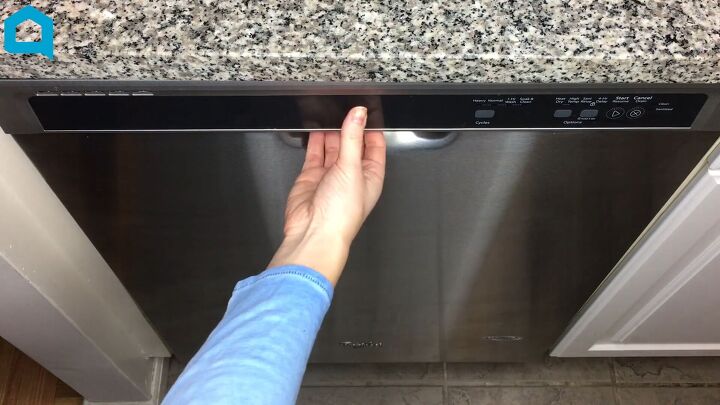















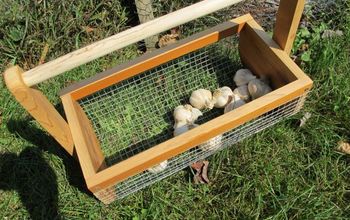
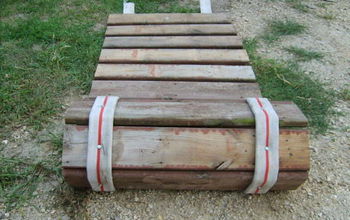




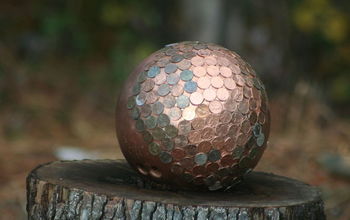


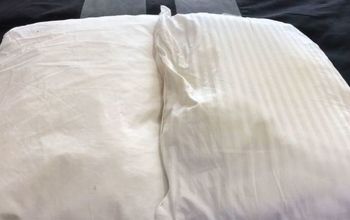





Frequently asked questions
Have a question about this project?